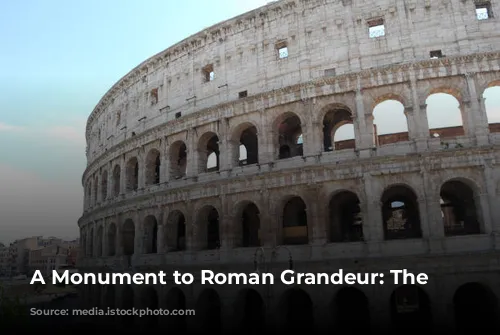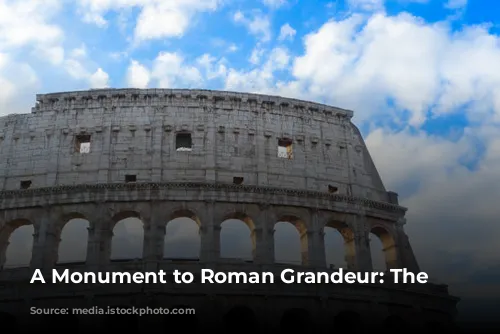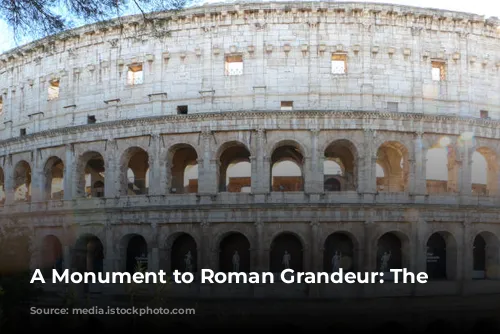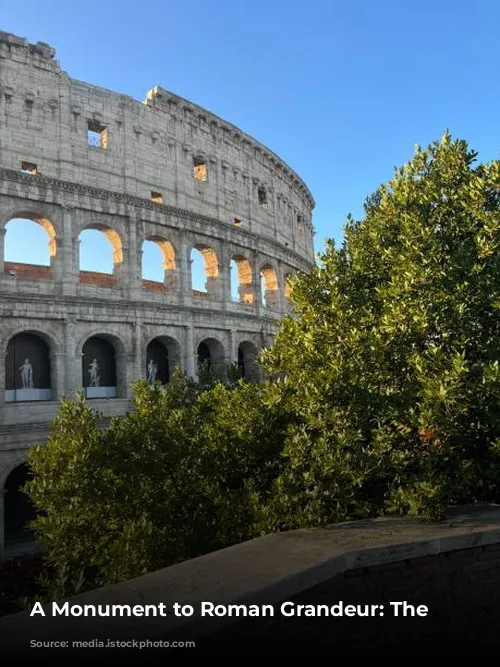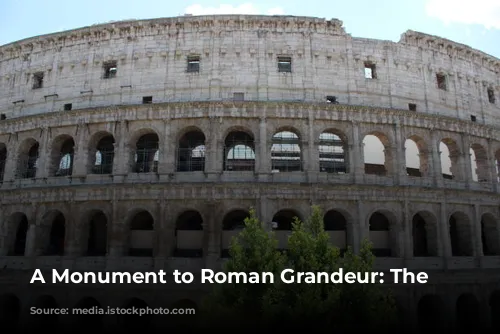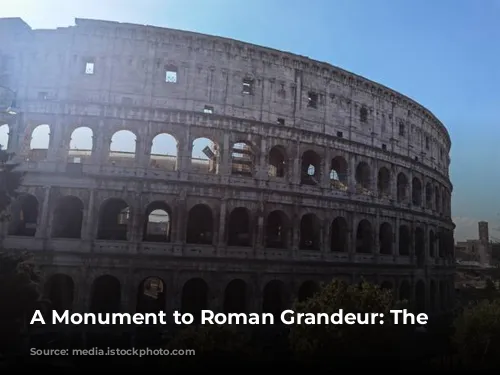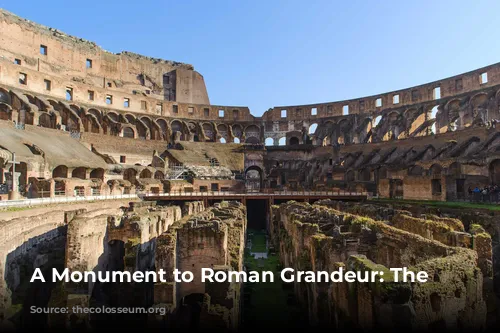The Colosseum stands as a testament to the architectural genius of the Roman Empire. It is the largest amphitheater ever built by the Romans, and despite facing numerous challenges, including fires, earthquakes, and human neglect, it continues to grace us with its presence.
This architectural marvel was erected between 70 AD and 80 AD under the reign of the Flavian Emperors: Vespasian, Titus, and Domitian. Originally known as the Amphitheatrum Flavium, the Colosseum served as a symbol of Roman power and a tool to reconnect with the people after the tumultuous reign of Nero. Construction commenced in 72 AD, on the site of an artificial lake previously built by Nero for his luxurious Domus Aurea.
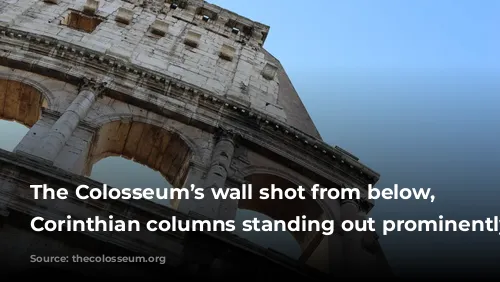
A Legacy of Labor and Sacrifice
A large portion of the labor force for the Colosseum’s construction was comprised of Jewish slaves. These individuals, captured during the first Jewish-Roman war, toiled tirelessly to bring this grand vision to life. The Colosseum’s impressive scale is a testament to their hard work and sacrifice.
The Colosseum’s oval shape and northwest-to-southeast orientation are striking. It stretches almost twice the length and 1.5 times the width of a modern football field, making it an imposing sight even today.
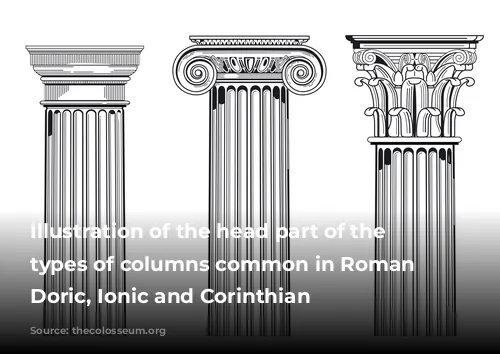
A Symphony of Stone and Iron
The construction of the Colosseum involved an estimated 100,000 cubic meters of travertine stone, a type of limestone mined near present-day Tivoli. This was coupled with an equal amount of Roman cement, bricks, and tuff blocks. To bind these massive stones together, 300 tonnes of iron clamps were used. These clamps were later scavenged during periods of neglect, leaving behind the distinctive pockmarks we see on the Colosseum’s walls today.
The Colosseum’s white travertine stone and towering height, nearly 50 meters (160 feet), made it an awe-inspiring structure for the ancient Romans. Its grandeur was comparable to standing before the Empire State Building today.
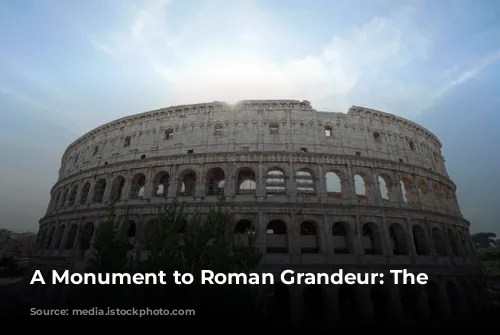
A Masterpiece of Architectural Orders
The Colosseum showcases the three major architectural orders of the Roman period. The ground floor features Tuscan columns, a Roman adaptation of the austere Greek Doric style. The second floor boasts Ionic columns, known for their elegance, while the third floor is adorned with the ornate Corinthian style. This progression from bottom to top reflects an increasing level of stylistic complexity.
The Colosseum’s exterior is defined by 80 arches distributed across its first three floors. Each arch features a half-column, creating a rhythm that adds to the building’s visual appeal. These arches are largest on the ground floor, measuring 4.2 meters (14 feet) wide and 7.05 meters (23 feet) tall, and slightly smaller on the upper floors.
The fourth floor, in contrast to the lower three, is devoid of arches and columns. It instead features flat panels, recently cleaned to reveal their intricate carvings and inlays of azurite and bronze.
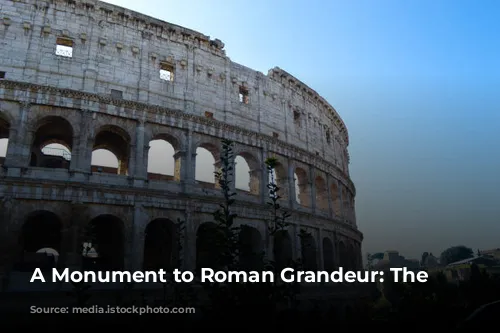
Gates of Triumph and Sorrow
The Colosseum boasted two main entrances. The Porta Triumphalis on the northwest side served as the gateway for triumphal processions and the entry point for gladiators entering the arena. The Porta Libitinaria on the southeast side, named after the Roman goddess of funerals, was used to remove the bodies of those who met their end within the arena.

A Stage for Blood and Spectacle
The arena, the heart of the Colosseum, was a rectangular space measuring 83 meters (270 feet) in length and 48 meters (160 feet) in width. The wooden floor was covered in sand, sourced from the nearby Monte Mario hill. Numerous trap doors concealed within the floor were used to introduce and remove elements of scenery and create special effects.
The arena was surrounded by a 10-foot wall, leading to the first level of seats. The arena’s wall, constructed of red and black stone blocks, provided a stark contrast to the surrounding white structure, reflecting the dramatic events that unfolded within.
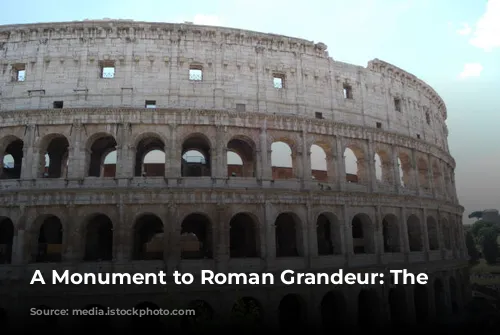
A Theater for Roman Society
The cavea, the tiers of seats surrounding the arena, were divided into three distinct sections, reflecting the social hierarchy of Roman society. The podium, the lowest tier, was reserved for the most esteemed individuals, including senators and high-ranking officials. As one ascended the cavea, the seating was reserved for those of lower social standing, with the porticus, the top tier, accommodating Roman citizens of modest means.
The seating was crafted from travertine stone, each seat measuring approximately 40 centimeters (16 inches) wide. Wealthier spectators often brought cushions to enhance their comfort. The Colosseum could accommodate an estimated 80,000 spectators, creating an atmosphere of immense excitement and anticipation for the events within.
The cavea was also divided horizontally by scalaria (stairs) leading to the stands and vomitoria, passages leading to the exterior. While often mistaken as places for vomiting, the vomitoria’s name actually refers to their function of spewing forth spectators, not the contents of their stomachs.
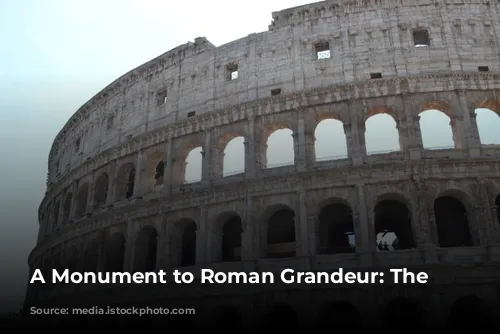
Secrets Beneath the Arena: The Hypogeum
Although not part of the original design, the hypogeum, the Colosseum’s underground area, was added later by Emperor Domitian. This intricate network of tunnels and chambers, spanning two levels, served as a holding area for gladiators and animals before their entrance into the arena above.
Eighty vertical shafts connected the hypogeum to the arena, providing a means for gladiators and animals to access the performance space. Some of these shafts incorporated hegmata, large moving platforms used to transport even the largest animals, such as elephants, up and down.
The hypogeum was linked to the outside world through a network of underground tunnels, connecting to gladiators’ barracks and nearby stables where animals were kept. The Colosseum even had a private access tunnel for the Emperor, allowing him to enter and exit the building discreetly, avoiding the throngs of spectators.
The construction of the hypogeum marked the end of naumachia, mock naval battles held within the arena. Two such battles were held before the hypogeum’s construction.
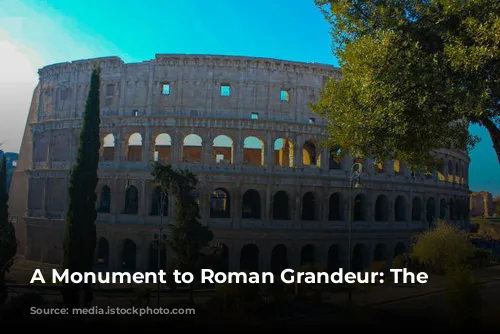
A Timeless Legacy
The Colosseum’s enduring presence serves as a reminder of the grandeur and complexity of the Roman Empire. As a testament to architectural mastery, it continues to inspire awe and wonder in visitors from all corners of the globe. It is a symbol of human ingenuity and a reminder of the lasting impact of the Roman civilization.
